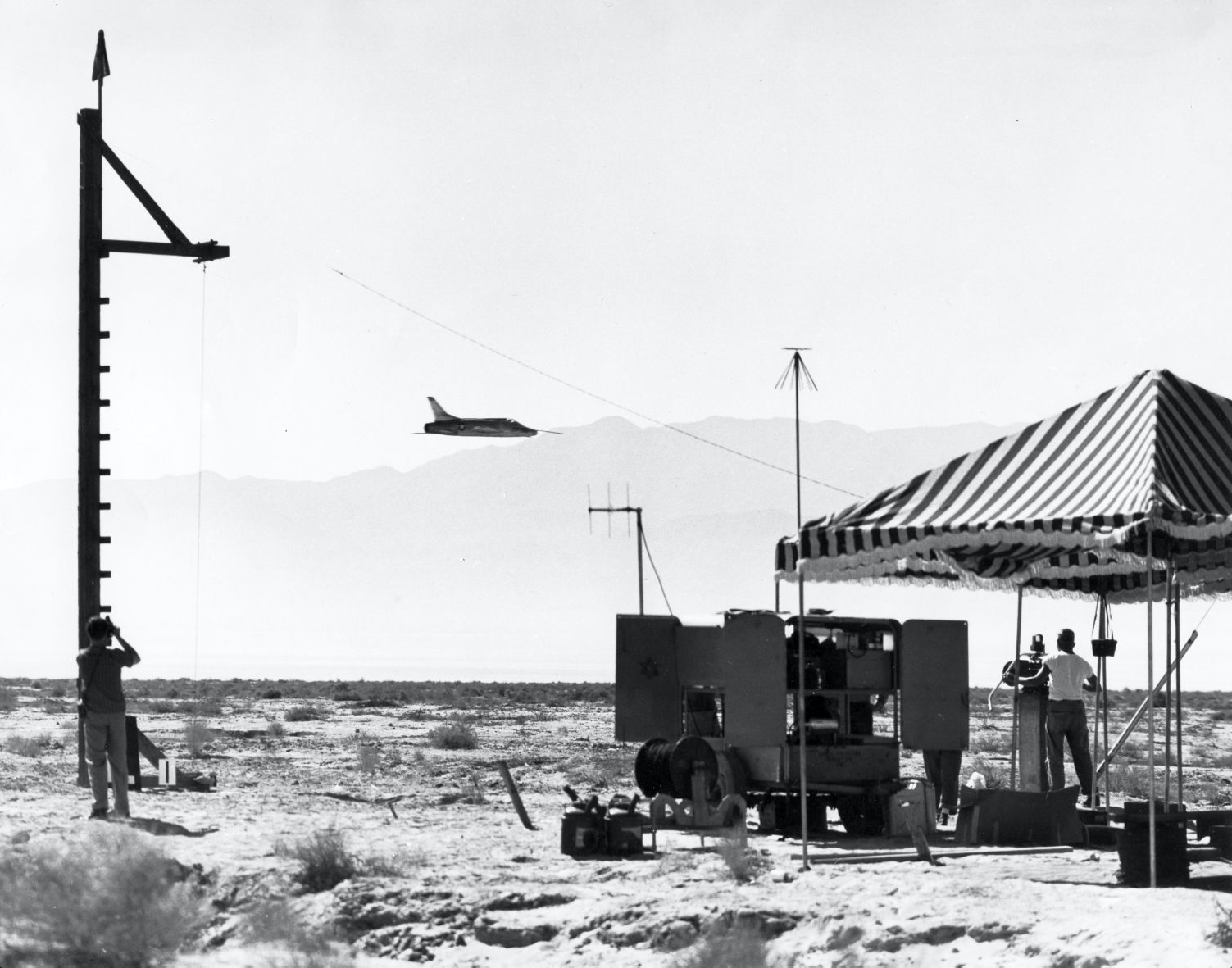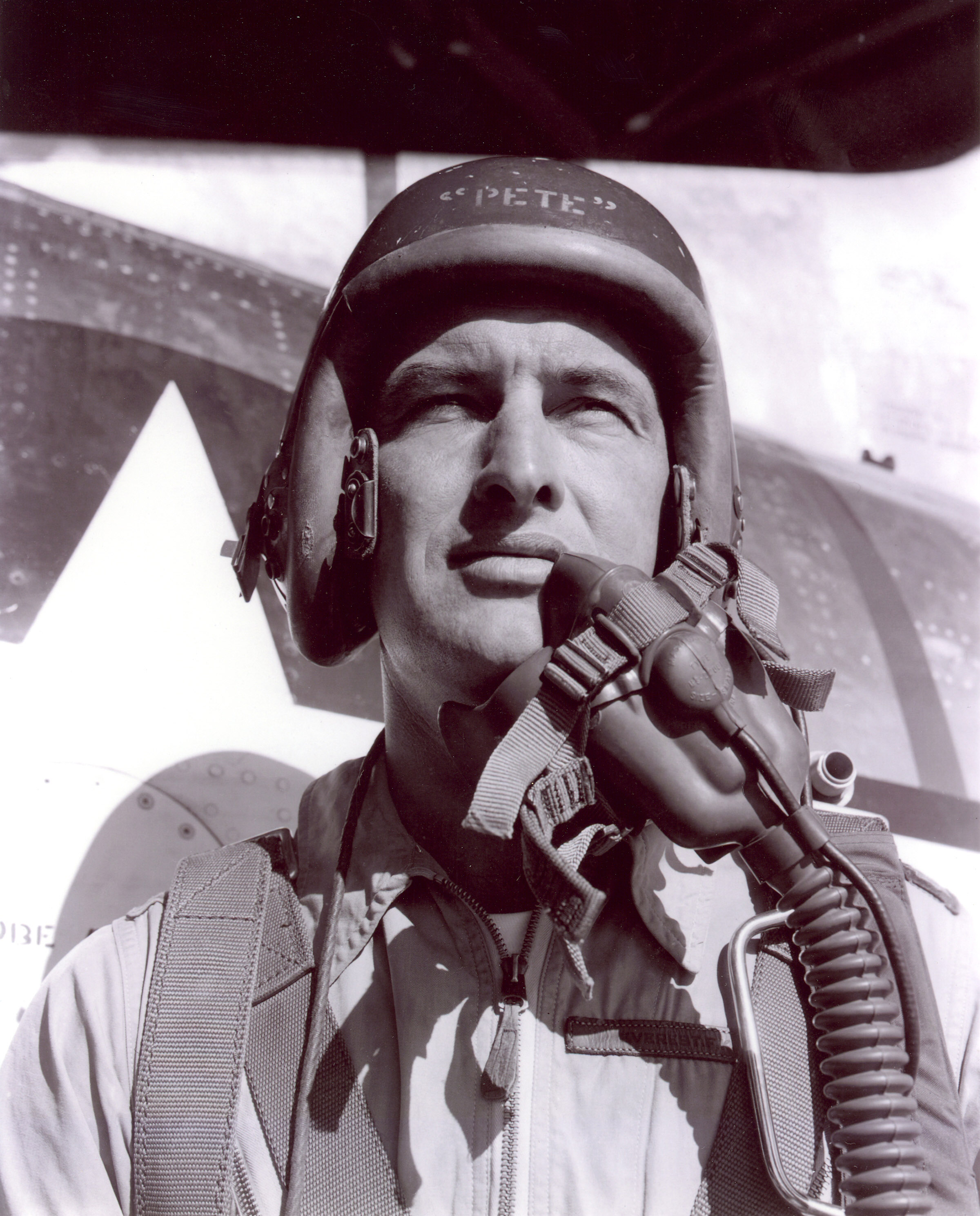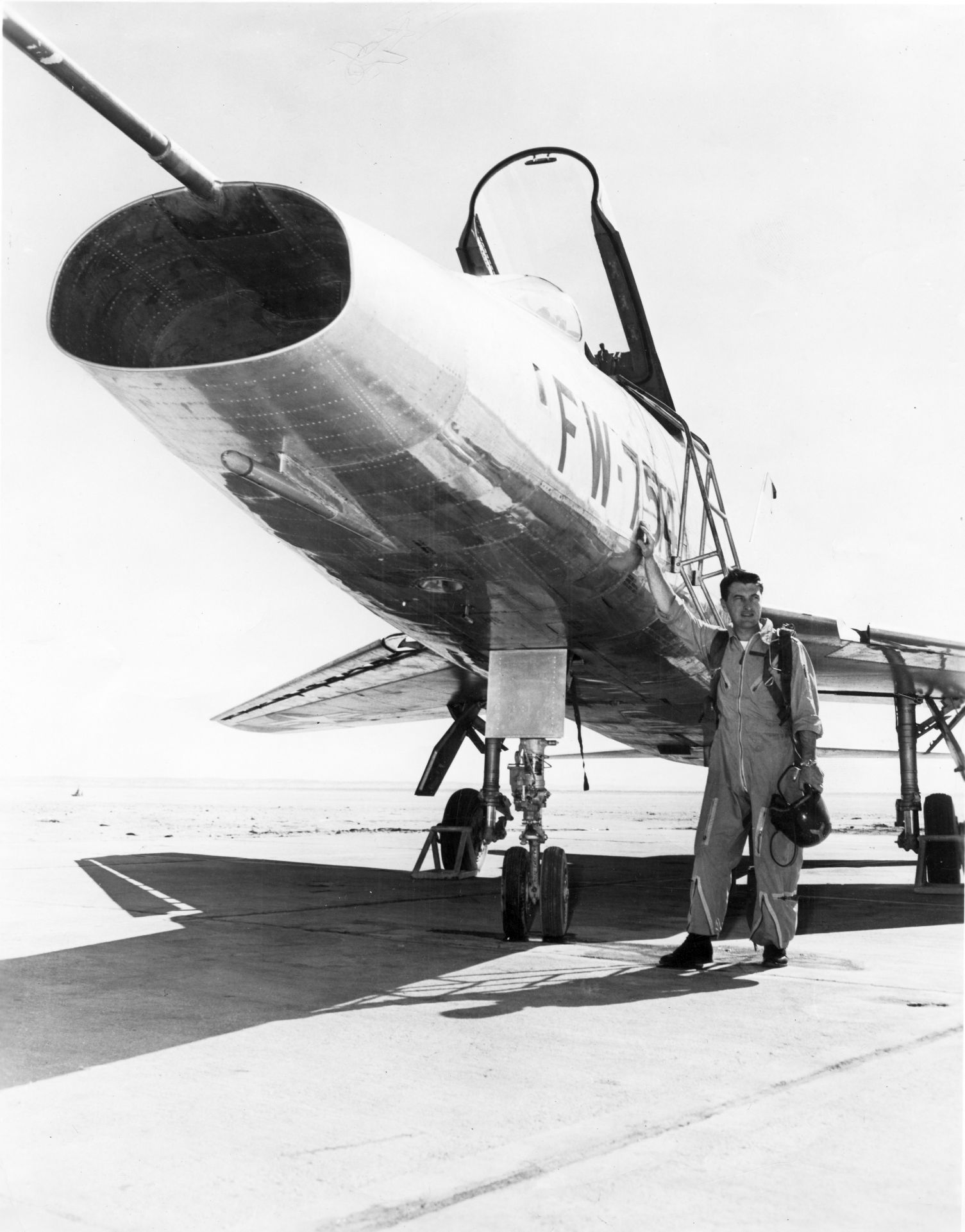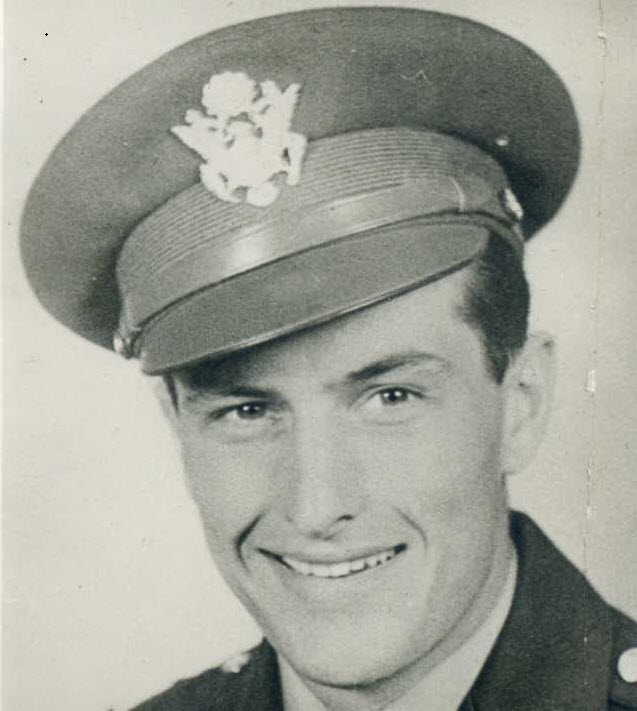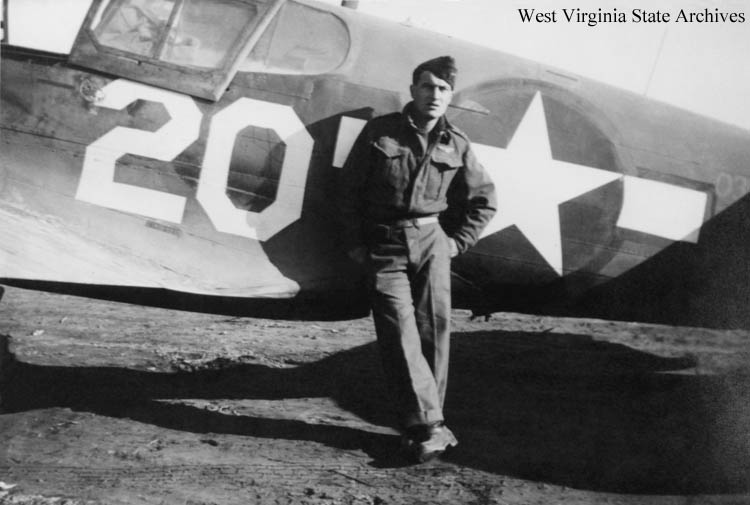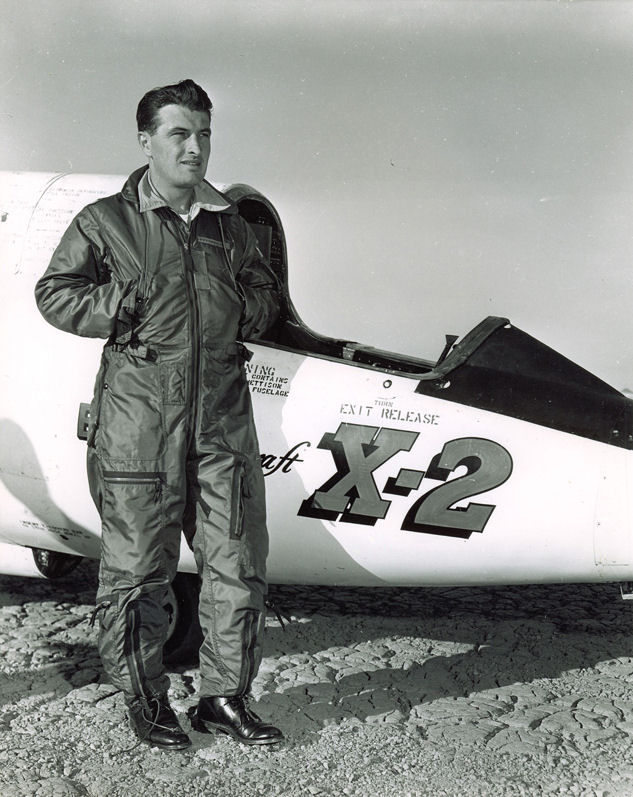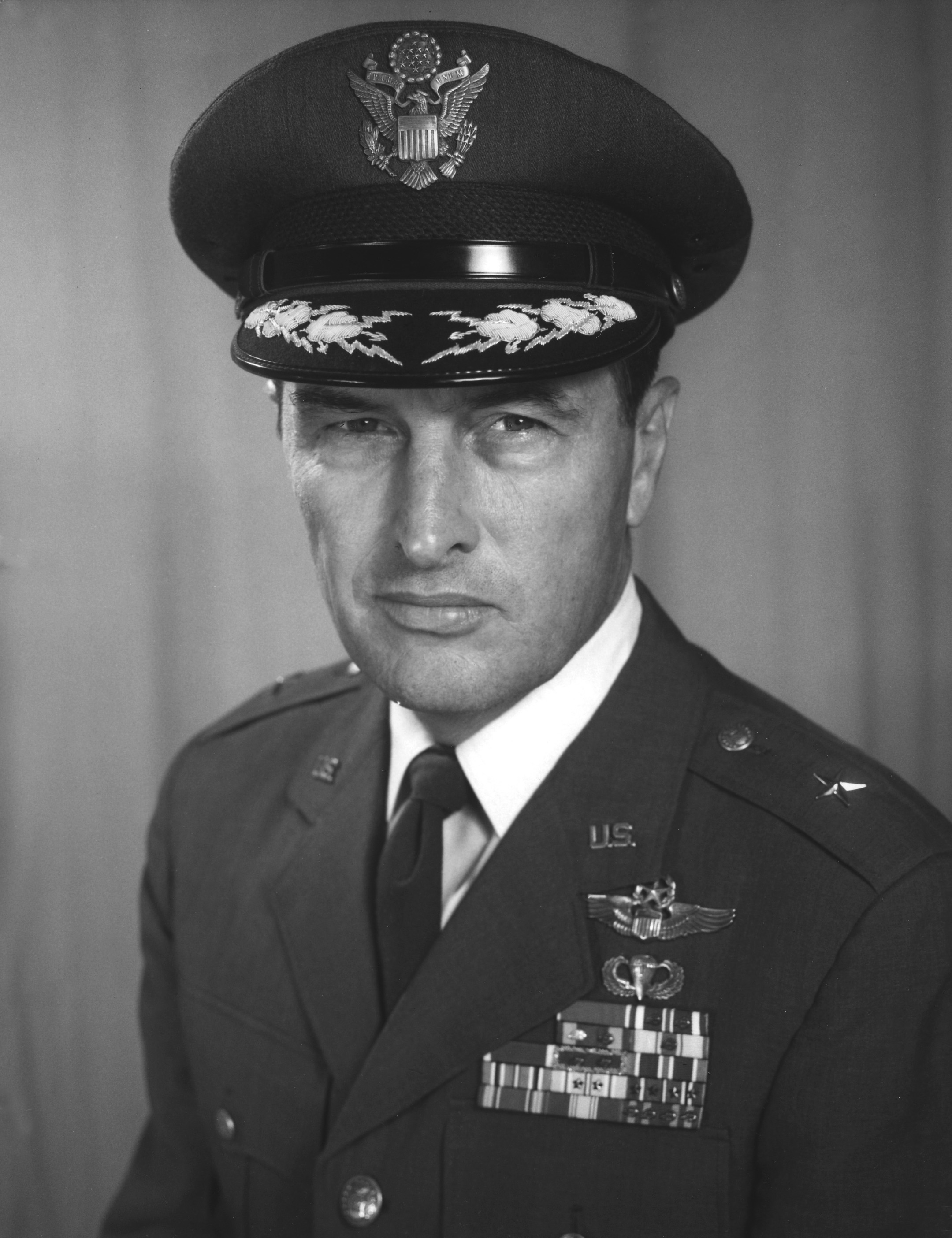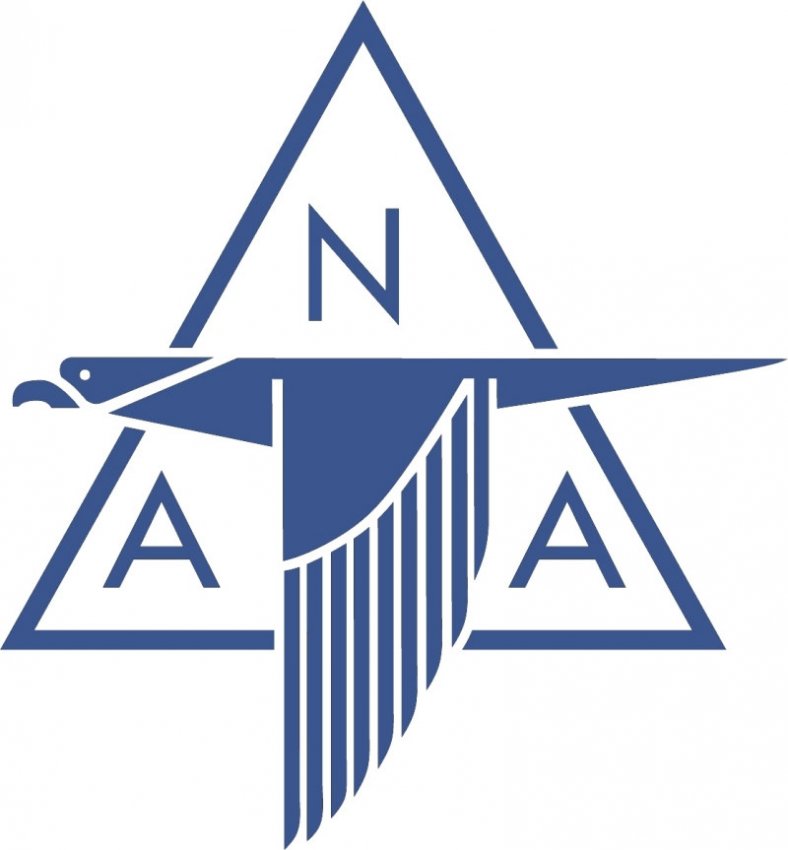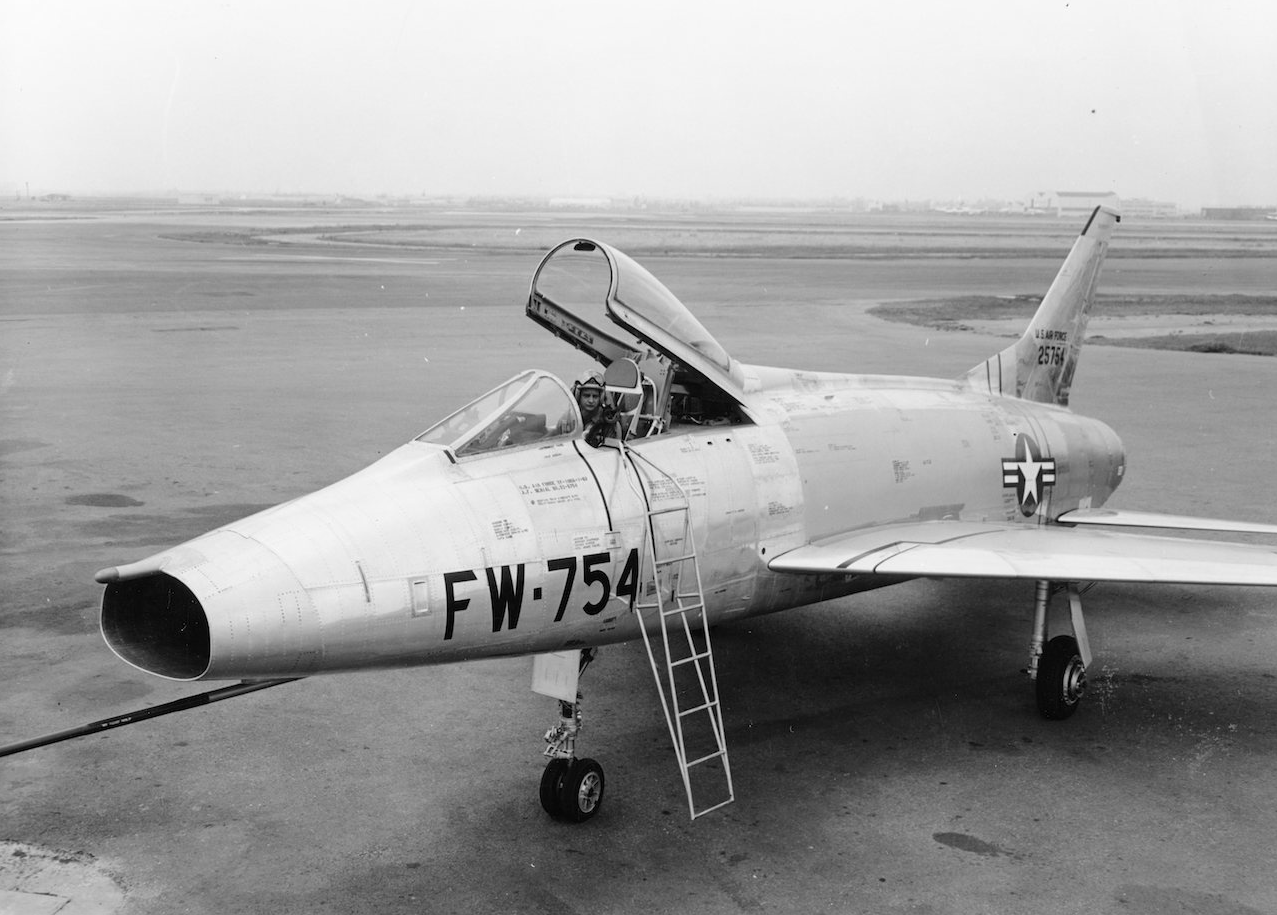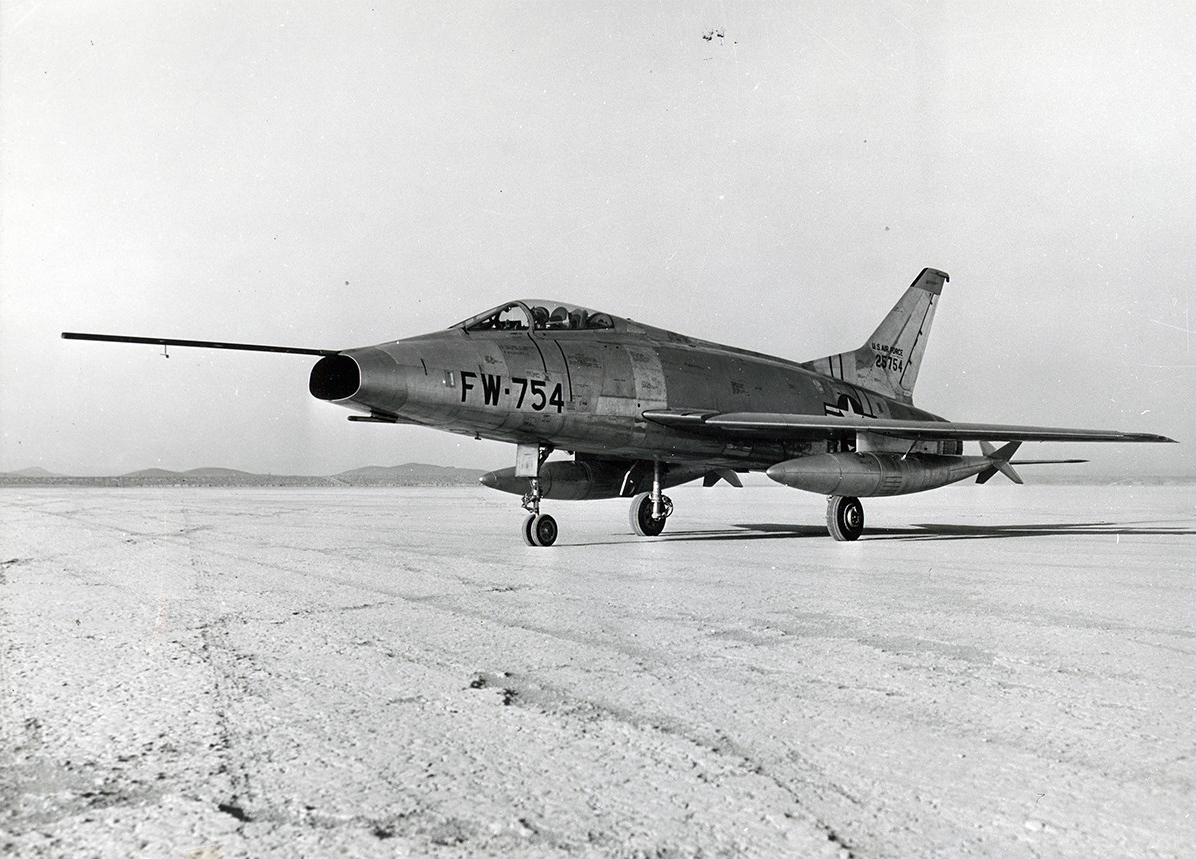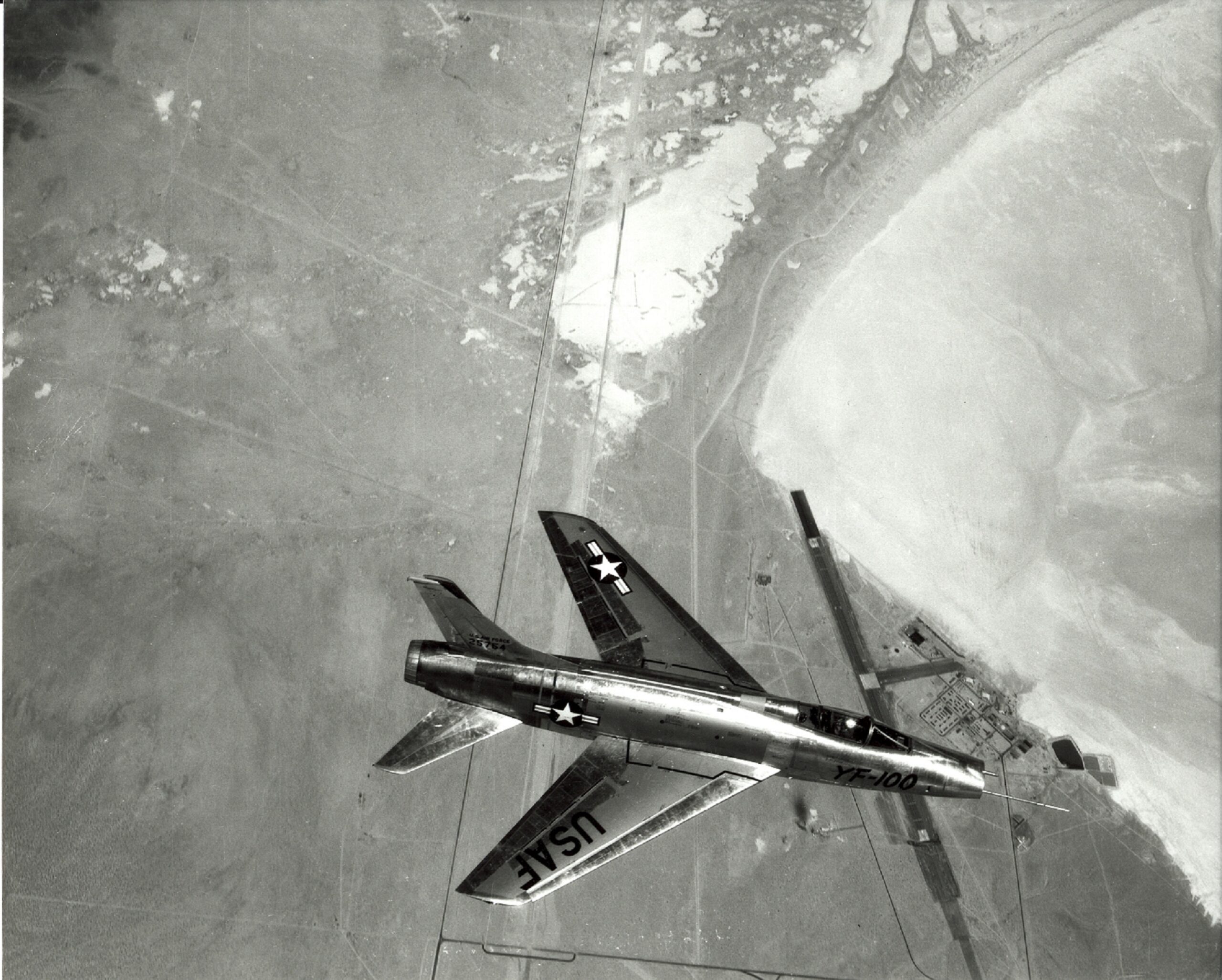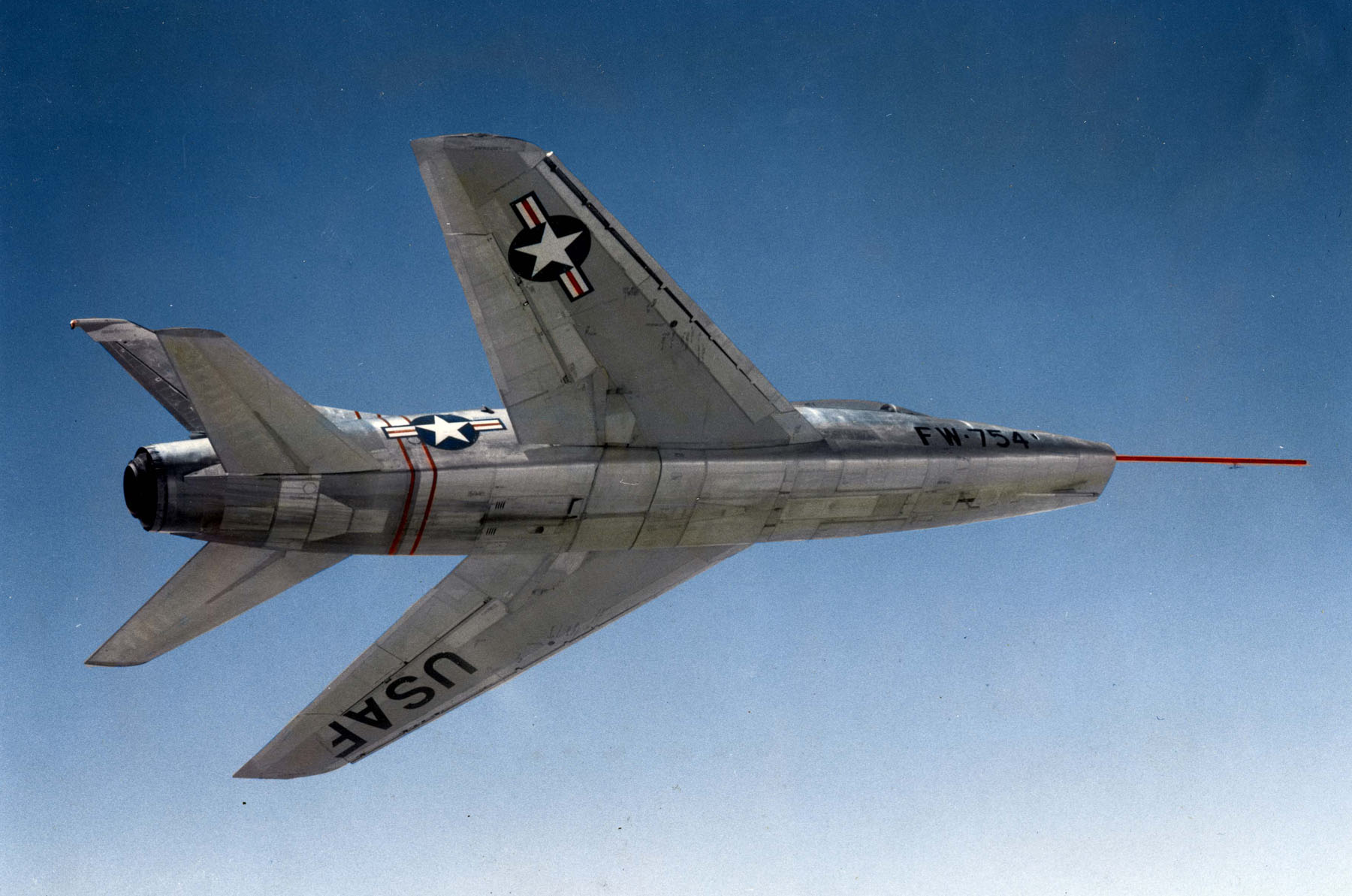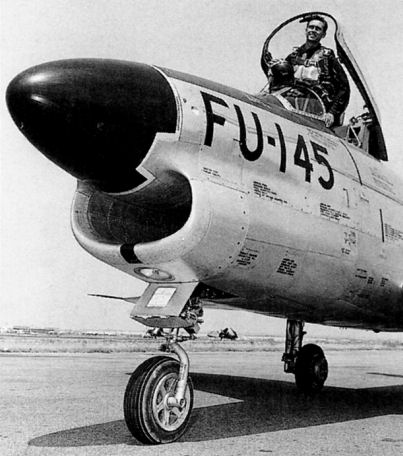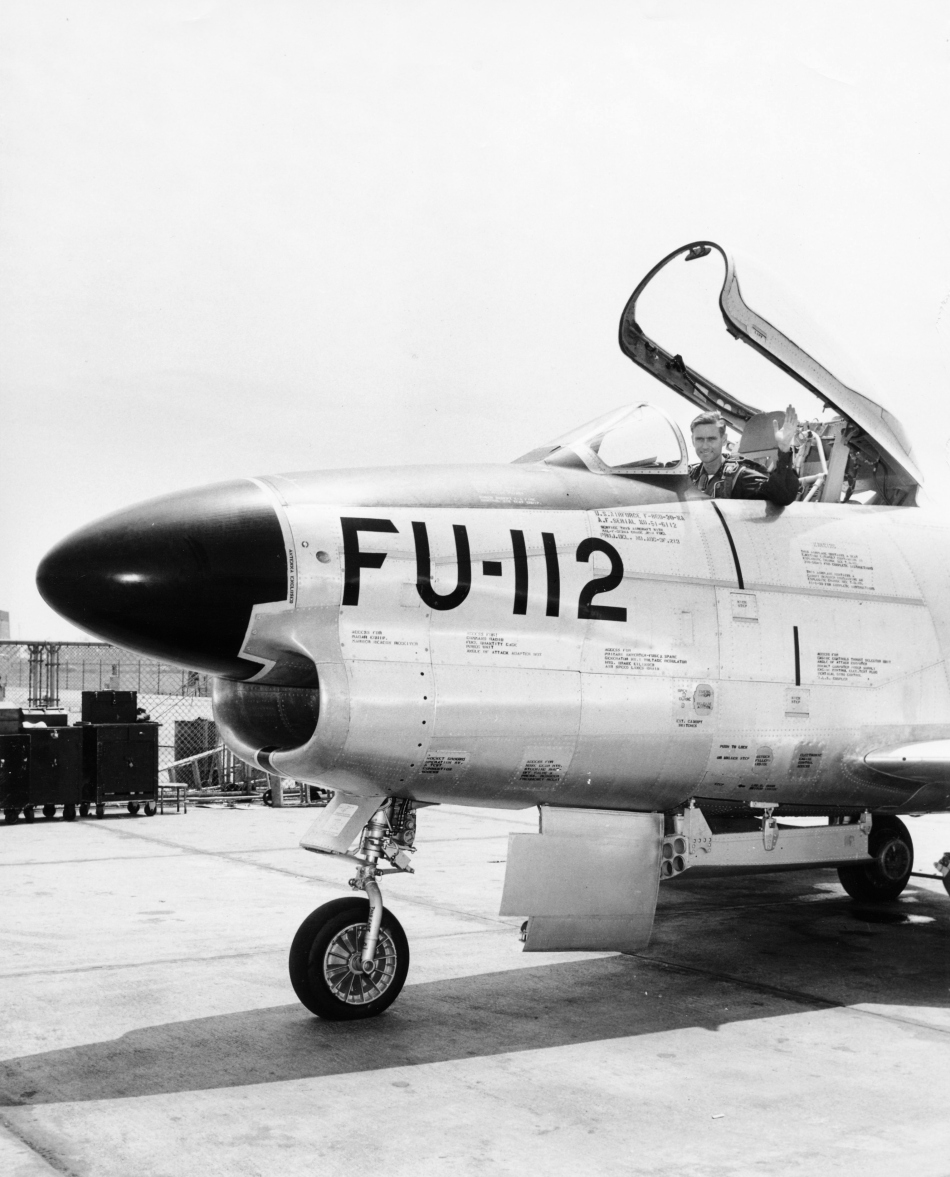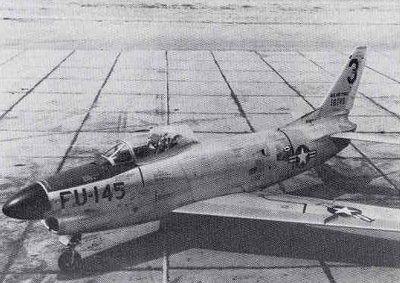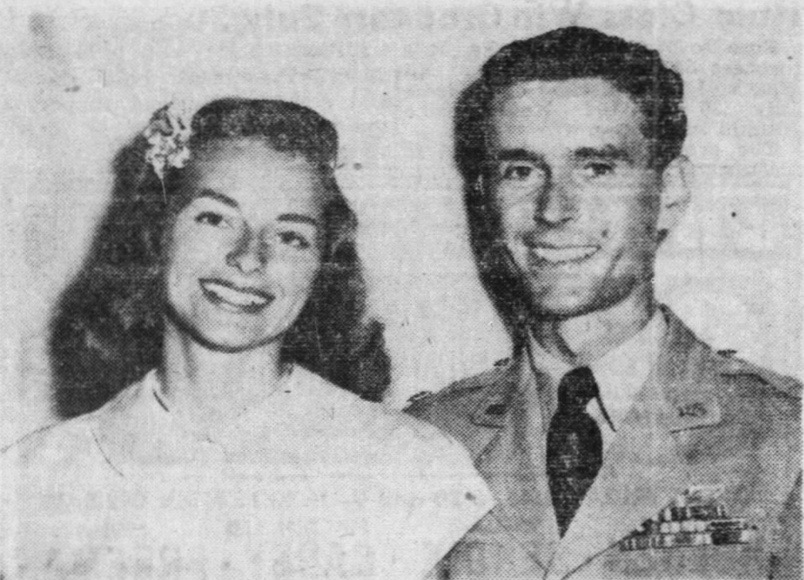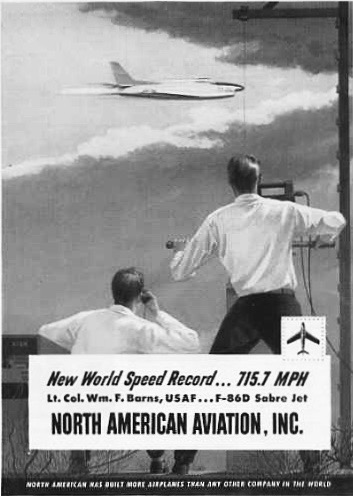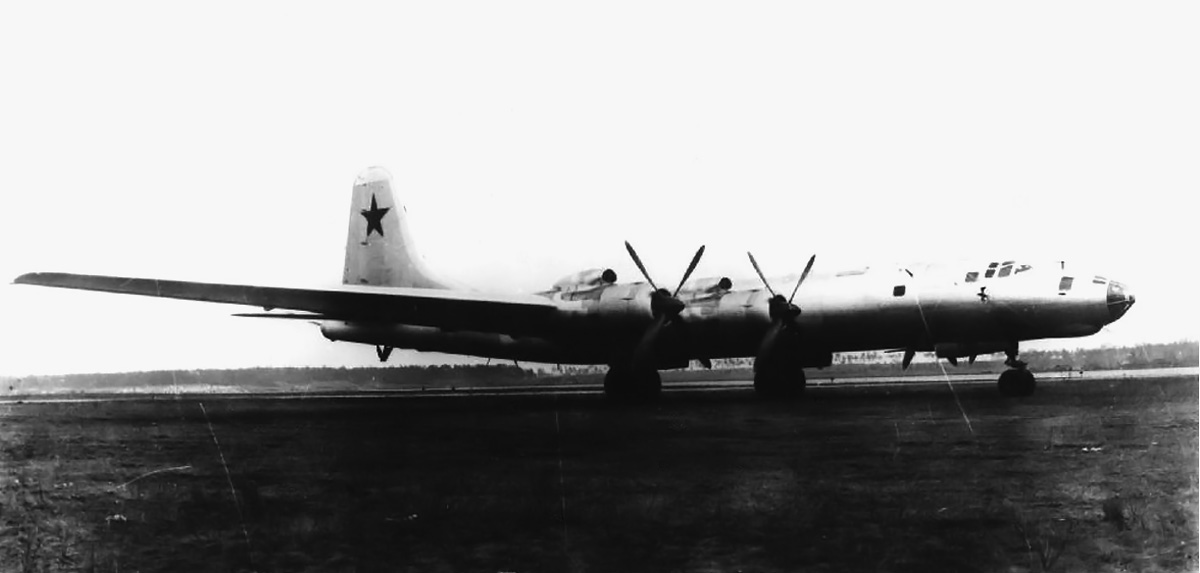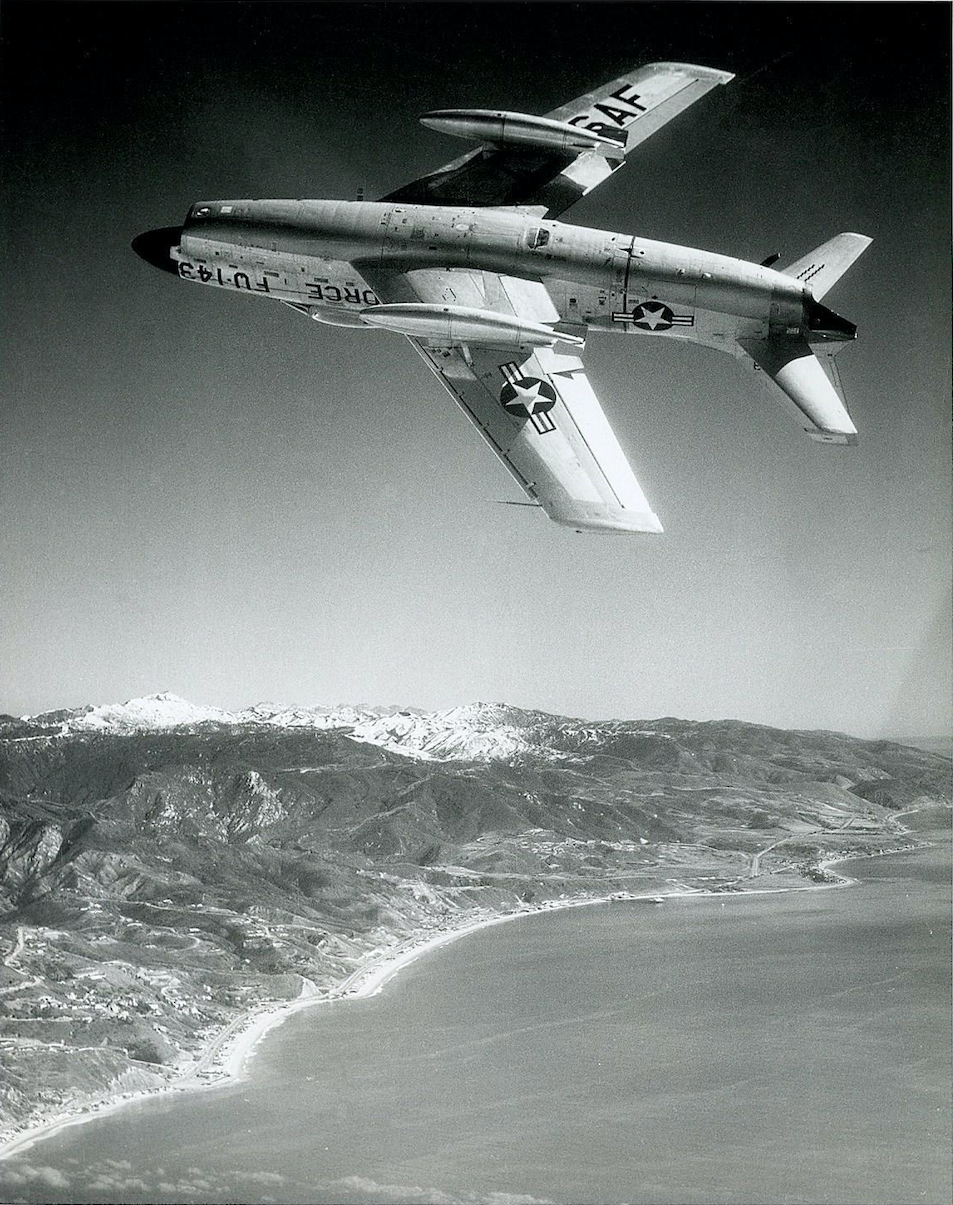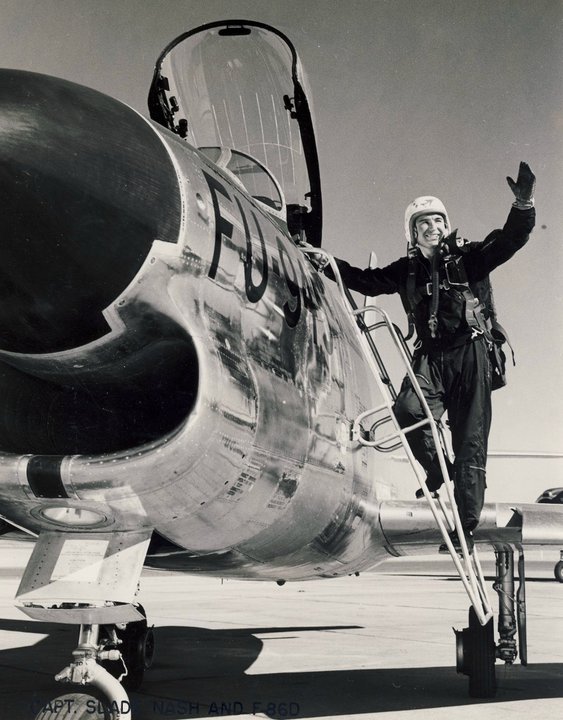
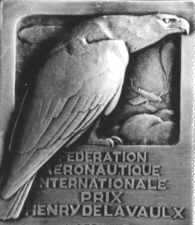
19 November 1952: Captain James Slade Nash, U.S. Air Force, a test pilot at the Air Force Flight Test Center, Edwards Air Force Base, California, flew a North American Aviation F-86D-20-NA Sabre, 51-2945, to a Fédération Aéronautique Internationale (FAI) World Absolute Speed Record at the Salton Sea, in the Colorado Desert of southeastern California.
Operating out of NAS El Centro, Captain Nash flew four passes over a 3-kilometer course at an altitude of 125 feet (38 meters). The official average speed was 1,124.14 kilometers per hour (698.508 miles per hour).¹ He was awarded the FAI’s Henry de la Vaulx Medal for achieving the World Absolute Speed Record.
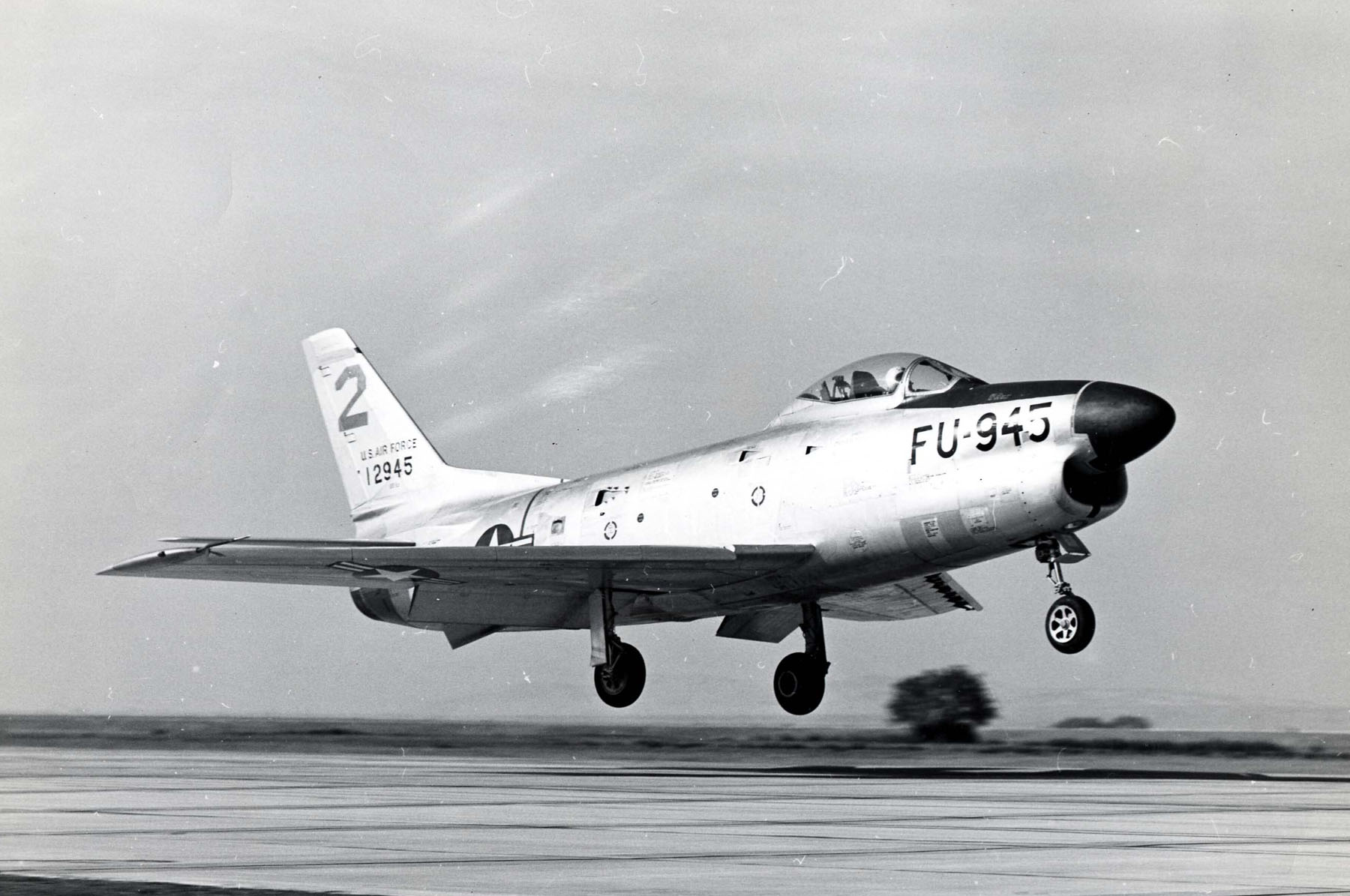
The Desert Sun reported:
Sabre-Jet Sets new World Speed Mark at Salton Sea
Record of 699.9 Mile Per Hour Established in Four Flights over Below Sea Level Course
The desert area, few miles east of Palm Springs, was the setting for a new international airplane speed record last week when an F-86D Sabre jet roared over Salton Sea at 699.9 miles an hour. It was reported that in test runs previously the plane had exceeded 700 miles an hour.
Risking his life to set the new record was Capt. Slade Nash, a 31-year-old Sioux City, Iowa man with three children. His wife, but not his three daughters, watched as Captain Nash barreled the swept-wing North American interceptor jet four times over the course, as close as 100 feet to the ground although he could have flown it at 328 feet.
Nash had only to hit 676 miles an hour to shatter the previous world speed record set September 15, 1948, by Maj. Richard L. Johnson, air material command test pilot, at Edwards Air Force Base in an earlier Sabrejet—the F-86A. Johnson’s mark was 670.981 m.p.h. and Nash was required to fly 5 m.p.h. faster to set a new record.
NASH’S SABRE jet carried a full rocket load. Adding hazard to the inherent danger of gunning a plane to near 700 m.p.h. was the low altitude below sea level—at when the run for record was made.
Fuel requirements are much higher at sea level than at high levels and air pressure on the plane is about four times greater. In addition, aerodynamic problems of drag, buffet, stability and structural strength are greatly increased at sea level. However, low altitude and higher temperatures make higher speeds possible.
CONDITIONS WERE NOT ideal for the test. Officials had hopes for 85-degree temperatures, but, at approximately 1:45 p.m., when the speed runs were made, the reading was only 75.5 degrees.
Nash came within shouting distance of the speed of sound—about 760 m.p.h. at sea level. The speed of sound—called MACH 1—has many times been surpassed by jet planes in dives at high altitudes—in fact, most jet pilots pass this barrier at some time or another—but never under the considerably more difficult conditions of an official attempt to break the world speed record.
NASH ALSO SET another record—being the first pilot to break a world speed record at below-sea-level altitudes. The Salton Sea is 235 feet below sea level and Nash’s Sabre jet was not believed to have gone above the sea level mark during his speed runs.
Scene of the run was a desolate, gully-slashed barren shore land about a mile and a half below Durmid, a railroad crossing, and just south of the Riverside-Imperial county lines.
About 100 newsmen, cameramen, manufacturers’ representatives and Air Force members were present. Head timer was C.S. Logsdon of Washington, D.C., director of the NAA Contest Division. Rules of the Federation Aeronautique Internationale and the Nationals Aeronautics [sic] Association (NAA) were followed.
Official timing was made with high speed movie cameras. Processing of those films was necessary before the exact official speed of the run could be determined.
—The Desert Sun, Palm Springs, California, Vol. XXVI, No. 17, Thursday, November 27, 1952, Page 2, Columns 1 and 2
The record-setting F-86D, 51-2945, was damaged in a ground collision with a Douglas RB-26C Invader, 44-35942, 29 October 1953, at K-14, Kinpo, Korea.
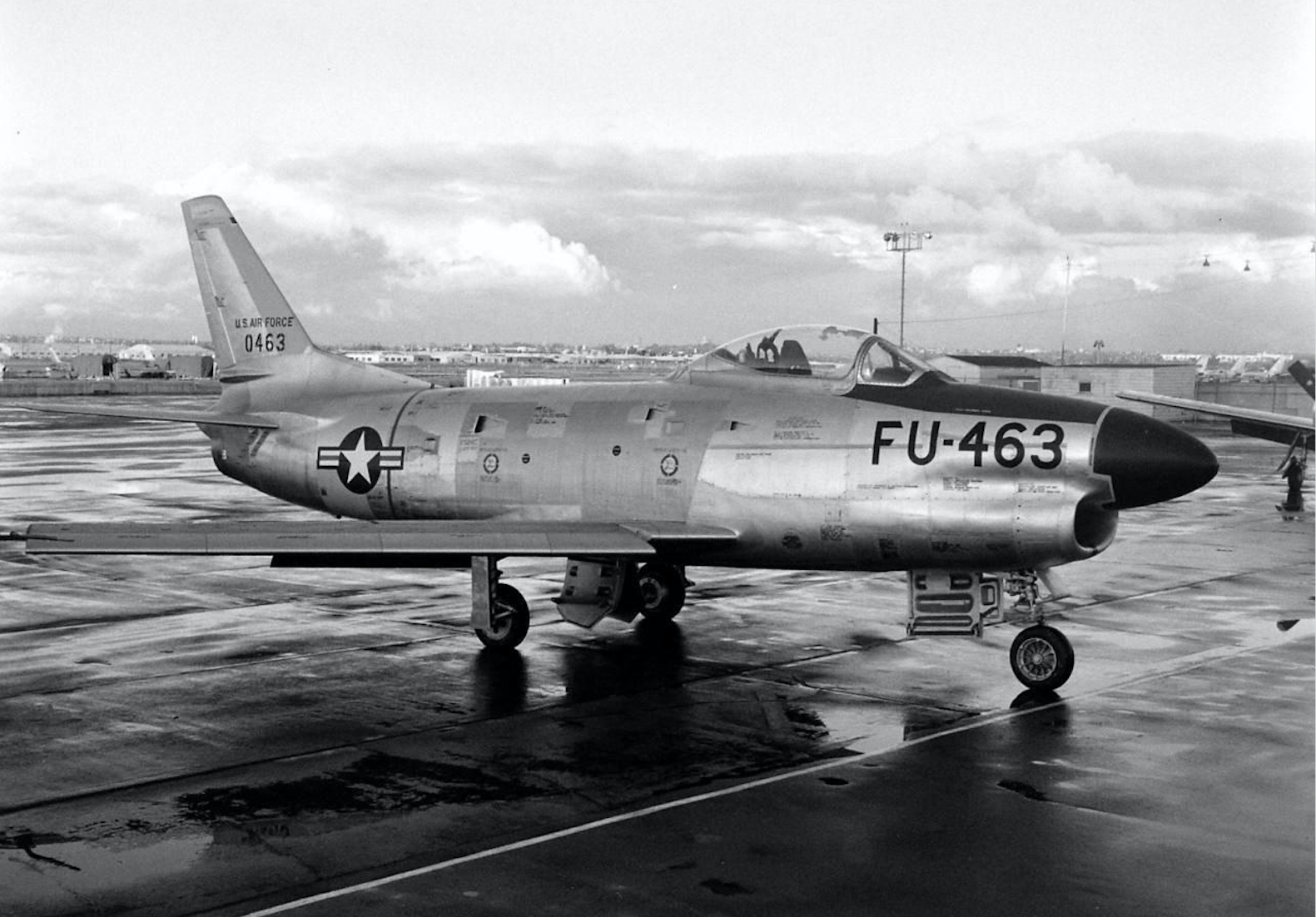

The aircraft was so complex that the pilot training course was the longest of any aircraft in the U.S. Air Force inventory, including the Boeing B-47 Stratojet.
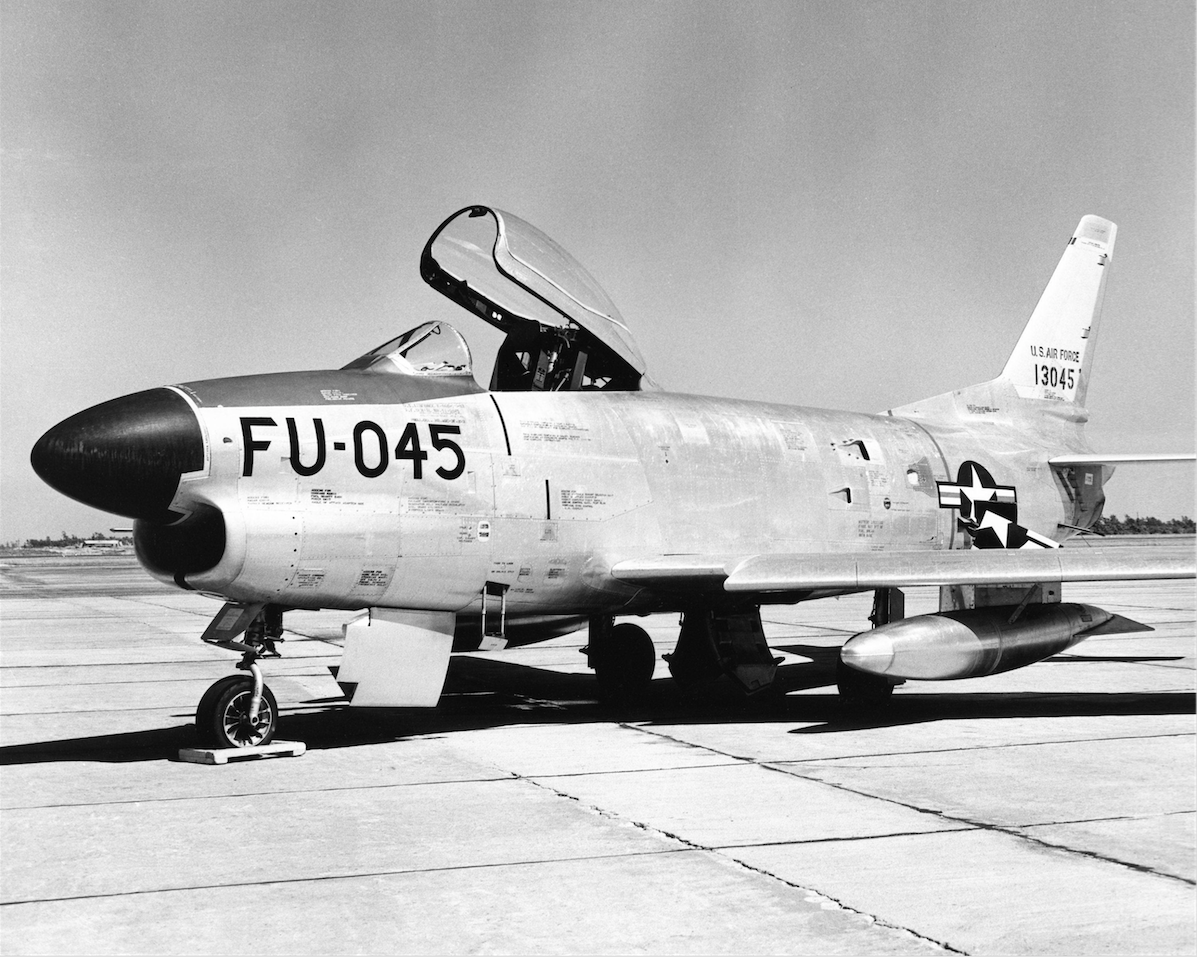
The F-86D was larger than the F-86A, E and F fighters, with a longer and wider fuselage. It was also considerably heavier. The day fighter’s sliding canopy was replaced with a hinged “clamshell” canopy. A large, streamlined radome was above the reshaped engine intake.
The F-86D Sabre was 40 feet, 3¼ inches (12.275 meters) long with a wingspan of 37 feet, 1½ inches (11.316 meters), and overall height of 15 feet, 0 inches (4.572 meters). The interceptor had an empty weight of 13,518 pounds (6,131.7 kilograms), and maximum takeoff weight of 19,975 pounds (9,060.5 kilograms). It retained the leading edge slats of the F-86A, F-86E and early F-86F fighters. The horizontal stabilizer and elevators were replaced by a single, all-moving stabilator. All flight controls were hydraulically boosted.

The maximum speed of the F-86D was 601 knots (692 miles per hour/1,113 kilometers per hour) at Sea Level, 532 knots (612 miles per hour/985 kilometers per hour) at 40,000 feet (12,192 meters), and 504 knots (580 miles per hour/933 kilometers per hour)at 47,800 feet (14,569 meters).
The F-86D had an area intercept range of 241 nautical miles (277 statute miles/446 kilometers) and a service ceiling of 49,750 feet (15,164 meters). The maximum ferry range with external tanks was 668 nautical miles (769 statute miles/1,237 kilometers). Its initial rate of climb was 12,150 feet per minute (61.7 meters per second) from Sea Level at 16,068 pounds (7,288 kilograms). From a standing start, the F-86D could reach its service ceiling in 22.2 minutes.
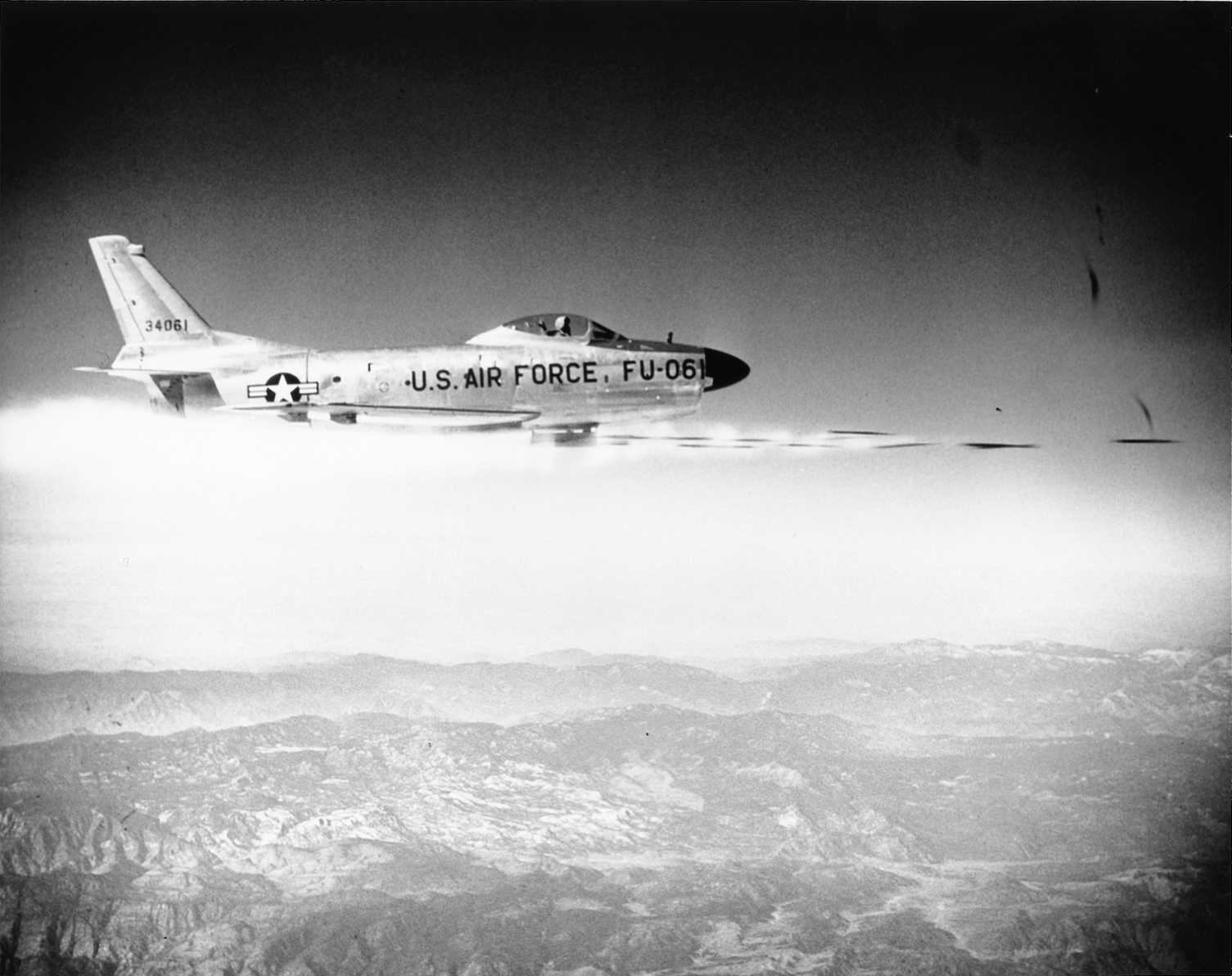
The F-86D was armed with twenty-four 2.75-inch (69.85 millimeter) unguided Folding-Fin Aerial Rockets (FFAR) with explosive warheads. They were carried in a retractable tray, and could be fired in salvos of 6, 12, or 24 rockets. The FFAR was a solid-fuel rocket. The 7.55 pound (3.43 kilogram) warhead was proximity-fused, or could be set for contact detonation, or to explode when the rocket engine burned out.
The F-86D’s radar could detect a target at 30 miles (48 kilometers). The fire control system calculated a lead-collision-curve and provided guidance to the pilot through his radar scope. Once the interceptor was within 20 seconds of its target, the pilot selected the number of rockets to fire and pulled the trigger, which armed the system. At a range of 500 yards (457 meters), the fire control system launched the rockets.
Between December 1949 and September 1954, 2,505 F-86D Sabres (sometimes called the “Sabre Dog”) were built by North American Aviation. There were many variants (“block numbers”) and by 1955, almost all the D-models had been returned to maintenance depots or the manufacturer for standardization. 981 of these aircraft were modified to a new F-86L standard. The last F-86D was removed from U.S. Air Force service in 1961.
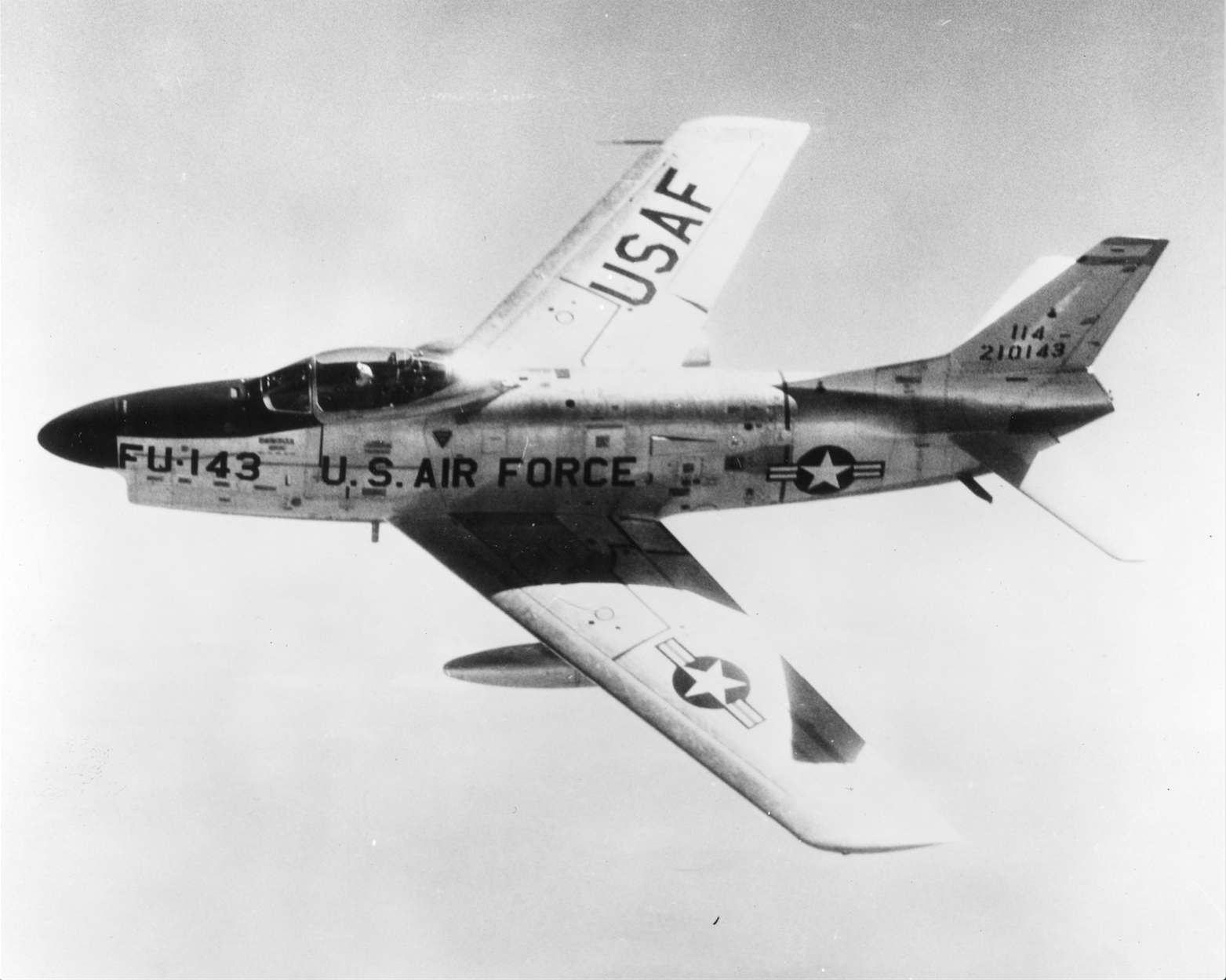
James Slade Nash was born at Sioux City, Iowa, 26 June 1921. He was the older of two sons of Harry Slade Nash, a farmer, and Gertrude E. Parke Nash. He attended Iowa State University before entering the United States Military Academy, West Point, New York, 1 July 1942. He graduated with a Bachelor of Science degree and was commissioned as a Second Lieutenant, U.S. Army Air Corps, 5 June 1945.
Slade Nash completed flight training and was promoted to First Lieutenant, 29 April 1947. He served as a pilot with the 8th Photographic Reconnaissance Squadron at Johnson Air Base, Sayama, Japan, and the 82nd Reconnaissance Squadron at Yokota Air Base, near Tokyo, Japan, flying the Northrop RF-61C Reporter.
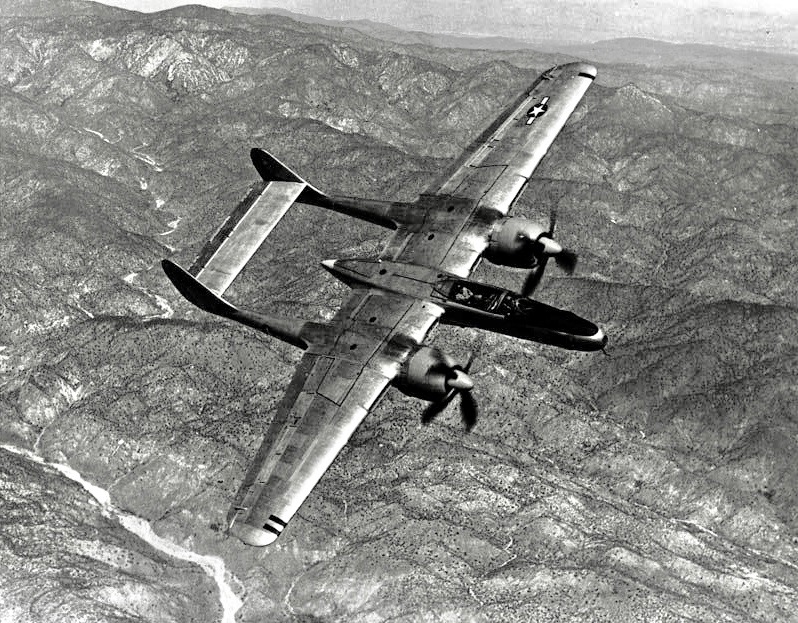
Nash began training as a test pilot at Wright-Patterson Air Force Base in September 1948. Captain Nash was then assigned to the Air Force Flight Test Center (AFFTC) at Edwards Air Force Base, and remained in that assignment for six years. He was involved in testing the delta-wing Convair XF-92 and YF-102, and flew many operational U.S. fighters and bombers.
After overseas staff assignments, Nash attended the Air Command and Staff College, Maxwell Air Force Base, Montgomery, Alabama, graduating July 1960. He served in the office of the Secretary of the Air Force until 1963, and as a liaison officer to the United States Congress. From August 1964 to October 1965, Nash attended the Army War College, Carlisle Barracks, Pennsylvania.
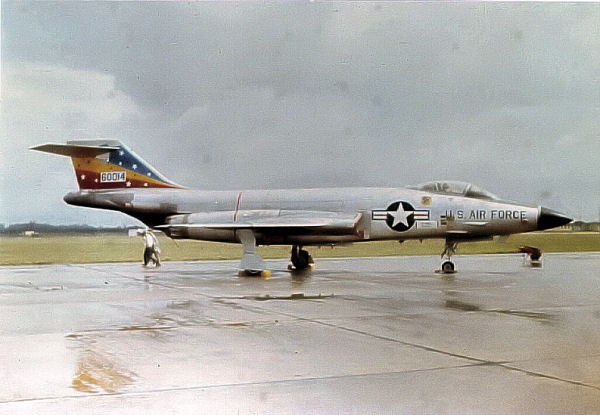
Major Nash commanded the 92nd Tactical Fighter Squadron at RAF Bentwaters, Suffolk, England, and next was the deputy wing commander of the 81st Tactical Fighter Wing. Promoted to Lieutenant Colonel, he was assigned to Headquarters, U.S. Air Forces in Europe.
Colonel Nash served as vice commander of the 8th Tactical Fighter Wing at Ubon-Rachitani RTAFB, and flew 149 combat missions in the new gun-equipped McDonnell Douglas F-4E Phantom II.
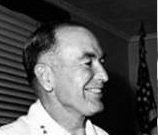
Nash was promoted to Brigadier General in 1969, serving as Vice Commander, Air Defense Weapons Center, Tyndall Air Force Base, Florida, and next, Vice Commander, Defense Special Projects Group. He was promoted to Major General on 1 September 1973, with date of rank retroactive to 1 February 1971.
General Nash served as Chief, Military Assistance Advisory Group to the Republic of China, and later, to Spain. From 1973 until 1976, Major General Nash was head of the Military Assistance Advisory Group to the United Kingdom. He retired from the Air Force in 1979.
During his military career, he was awarded the Distinguished Service Medal, Legion of Merit, Distinguished Flying Cross with Oak Leaf Cluster (two awards), and eight Air Medals. He was rated a command pilot with more than 6,000 flight hours.
Major General James Slade Nash died 19 March 2005 at the age of 84 years. He is buried at the United States Air Force Academy Cemetery, Colorado Springs, Colorado.
¹ FAI Record File Number 9867
© 2018, Bryan R. Swopes
